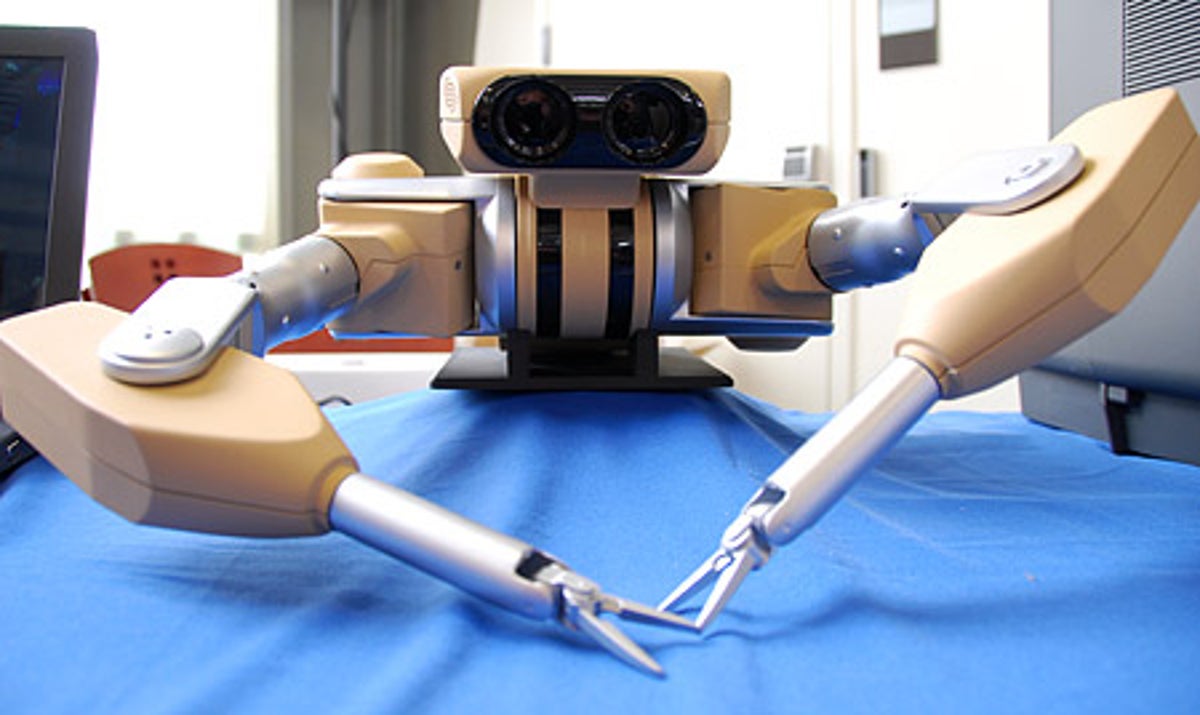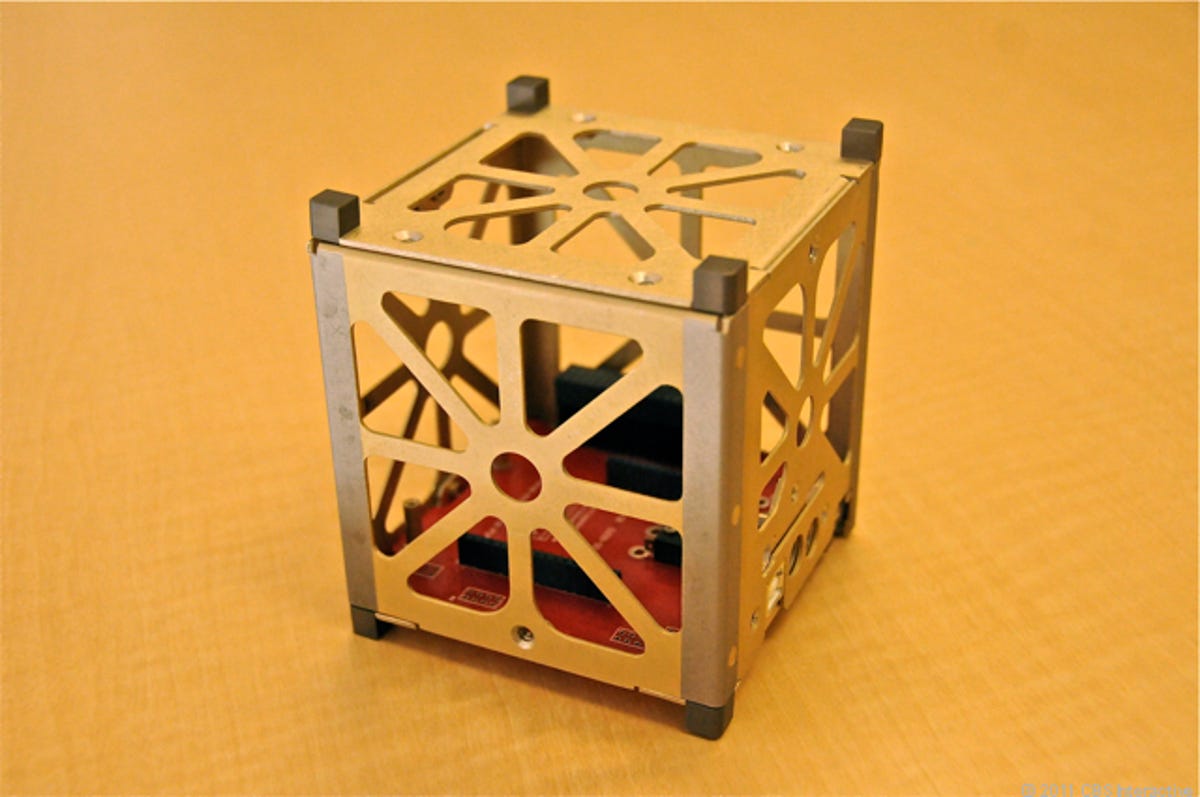At SRI, bomb-disabling robots go mini (photos)
Road Trip at Home: At SRI International, miniaturization is key, including remote robots for disarming bombs, and tiny satellites.

Taurus
So it should come as no surprise that it is a place where research in one area evolves into products in others.
Shown here is Taurus, a miniature remote-controlled robot designed to disarm bombs for the military and police departments. The technology behind it was originally developed for large-scale remote surgical robots. But over the years SRI's researchers have steadily reduced the size of that robotic technology, and today Taurus is just 14 inches shoulder to shoulder. Now it allows those who dismantel bombs to remotely, and without risk to themselves, take apart explosives.
Taurus from the side

CubeSat
While there are small-scale satellite projects like this throughout the world, SRI says it can advance the field of such satellite operations due to its ability to work on communications networking systems, and to design CubeSat projects for partners as diverse as the U.S. Air Force, universities, and the National Science Foundation.
The CubeSat can be outfitted with all kinds of networking equipment and any number of sensors, so long as they can fit inside. SRI has even developed a tiny propulsion system that can allow CubeSats to control their movements in space. They can be launched in groups, and work in tandem, or be spread out over hundreds or thousands of miles in space to create wide mesh networks. And all for tens of thousands or hundreds of thousands of dollars, rather than millions.

